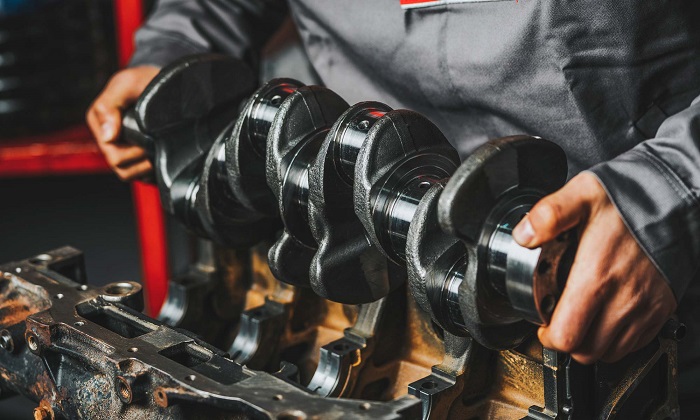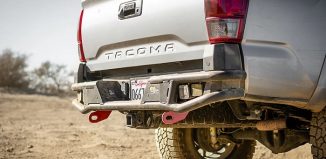Getting more out of your car isn’t as hard as it seems. All it takes is a few performance parts to increase horsepower and torque numbers. These will get you better acceleration times off the mark and higher top speeds. All engines have a bit more to give, and well-thought-out additions will get the blood pumping each time you put the pedal down.
Gearheads know that changing out the stock pistons, connecting rods and cranks is where the biggest gains are to be had. This is assuming that you’ve already donned an uprated cold air intake and modified the exhaust for better airflow. The goal is to get more oxygen-rich air in for combustion.
Fuelling and timing also need to be balanced, with more aggressive camshaft profiles, uprated injectors, and plugs for extra spark. Get this right, and then it’s onto modified engine internals. The following are the reliable aftermarket performance car parts that will completely transform your car.
Pistons

Pistons are the metal components that move that newfound power down through connecting rods and onto the crank. With mods that improve combustion, you also want better pistons that can handle the increase in pressure, mechanical stresses, and temperatures. This implies the use of better materials and production processes that add strength and durability.
Most cars have stock cast aluminium pistons. These have decent wear resistance, optimal sealing in the cylinder bore, lower weight and are tuned for quiet operation. They’re perfectly fine for everyday driving. But when you’re hard on the acceleration pedal, it’s the pistons that are some of the first engine components to fail.
Damage to piston crowns, the parts that bear the brunt of combustion, can lead to knocking, misfiring, and loss of power. And faulty piston skirts and piston rings result in a loss of compression, the engine coughing up black smoke, and in serious cases, the piston and engine seizing.
Going for forged or billet pistons means considerably more strength, extended durability, and parts that can handle higher engine speeds. This is down to improved ductility (and a lower silicon content), so less deforming under higher loads, and hence, a lower chance of failure. Revised designs also imply that more of the power produced during combustion is sent downwards and to the wheels.
Connecting Rods

Conrods are the parts that convert the linear up-and-down motion of the piston in the cylinder bore into rotational force that moves the crankshaft. You’ll often find balanced conrod and piston combos since strengthened (or heavier) pistons naturally mean stronger connecting rods. With higher engine speeds, and more pushing and pulling these parts take in each engine stroke, conrods need to be made tough.
Like pistons, aftermarket performance car parts like forged conrods will see a significant bump in available horsepower and more torque spread across a wider rev range. There are two basic designs to choose from. I-beams are what are found in stock engines, but performance variants are good for cars with an added or modified turbine, since the higher weight can cope with revised compression ratios, and higher boost levels without the fear of them snapping.
Lighter H-beams are good for higher-revving naturally aspirated engines. Here again, the choice of materials has a huge say in how conrods perform. Steel and carbon steel are seen in production cars, while aluminium connecting rods are a good choice for higher revving, as well as a stroker engine.
The higher elasticity in aluminium prevents conrods from snapping while expanding and contracting thousands of times a minute. If you’ve got thousands to spend per connecting rod, then don’t hesitate to splurge on titanium alloys that can easily cope in engines tuned for 1000+bhp.
Crankshafts

Cranks are the auto parts that make use of all the effort put in by pistons and conrods. That power moves to the flywheel, then geared in the transmission and sent to the wheels. After modifying pistons and conrods, the next logical step is to optimise the crankshaft. This can be tuned for less rotational weight (to further increase redlines) and strengthened to cope with the increase in rotational stresses (from moving pistons and conrods) that twist and bend the crankshaft during each 360° cycle.
Forged performance cranks made of high-grade steel alloys handle higher loads and stresses than cast-iron cranks seen in production cars. These durable aftermarket performance car parts are also rated for almost twice the horsepower, exhibit up to 50 per cent higher strength, and almost 25 per cent more elongation. In short, they’re way tougher and can take a beating. Production process and treatment are on another level in these aftermarket performance auto parts.
While twisted cranks were the pinnacle of what was seen as high-end just a few years back, today, non-twisted cranks have the highest strength and can sustain the highest loads. They can also be machined to a lower weight and reduce vibrations. The best performance though is with a billet crankshaft, essentially carved out of a solid piece of metal. To improve surface hardness, wearability, and resistance to corrosion, and reduce metal fatigue, forged and billet cranks undergo heat treatment or nitriding. The final product is further machined to the specific requirements of the engine.
The Final Word

The choice of aftermarket car performance parts largely boils down to what you intend to do with the vehicle. This can be subtle or extreme upgrades. Pistons, conrods, and cranks tend to be some of the last mods done, aside from experiments with turbocharging and supercharging.
While all upgrades improve on stock, pairing the right engine parts needs to be a balance between outright performance and longevity. You’ll want a car that’s faster and more responsive than before, without having major hiccups or needed parts replacements every couple of hundred kilometres. Thoroughly research what’s available and get specifically engineered parts for your car from respected brands.












